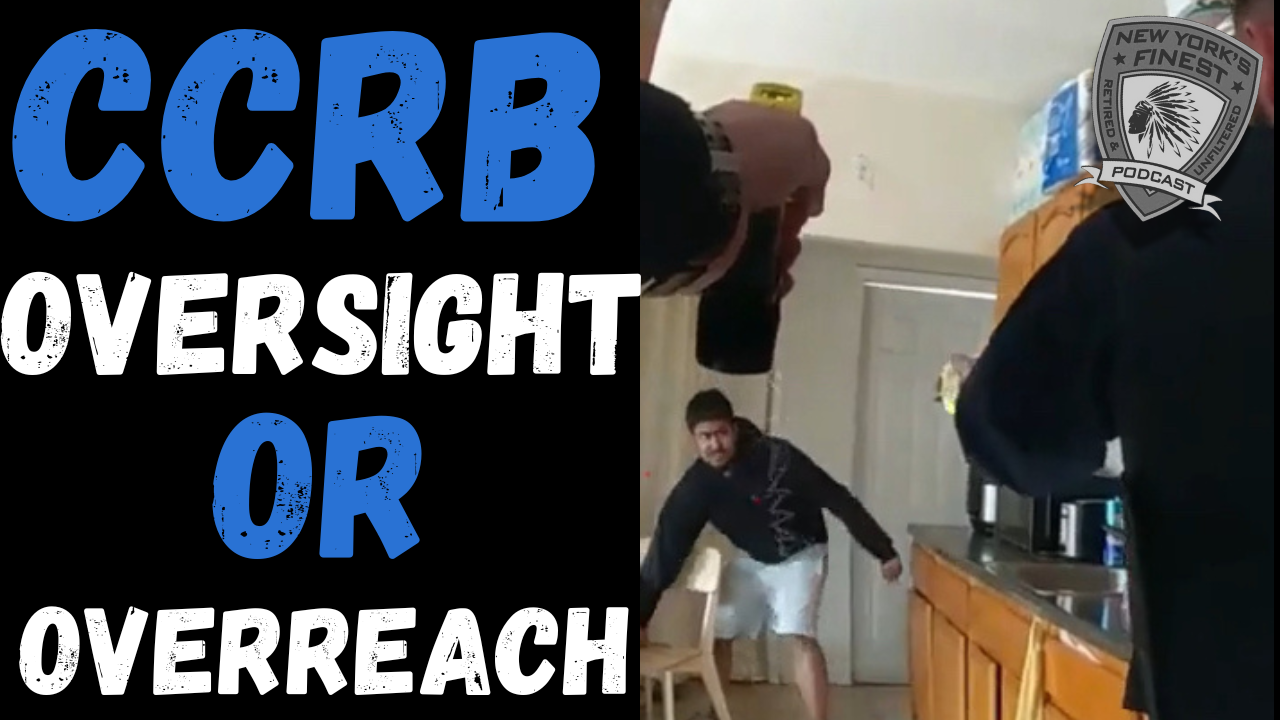By Eric S. Dym, The Finest Unfiltered
Oversight in policing is necessary. No profession should operate without accountability. But oversight loses its legitimacy when it crosses into bias and overreach. That’s where New York City’s Civilian Complaint Review Board (CCRB) has drifted; stretching its authority and ignoring the dangerous realities officers face in the field.
The CCRB was designed to investigate misconduct and build public trust. Yet in recent years, it has gone well beyond its original charter.
In 2023, NYPD unions sued after the Board claimed new authority to probe racial profiling and body-camera use, calling it a “power grab” and unlawful under city law.[^1] Former Commissioner Keechant Sewell also overruled or ignored CCRB discipline recommendations in at least 425 cases in 2022—more than double what had been publicly known.[^2] Even CCRB’s own panels have been reversing nearly half of their investigators’ findings, a flip rate that has skyrocketed from 10% historically to 40–50% in recent years.[^3]
The result is a system that feels less about fairness and more about politics. The bi-product leaves officers unsure of the standards they’ll be judged by and accountable for.
The gap between CCRB oversight and real-world policing is especially clear in emotionally disturbed person (EDP) encounters. These calls are among the most dangerous: confined spaces, unpredictable behavior, and split-second choices.
Tasers, promoted as a “less lethal” alternative, are often touted as the solution. But the reality is far less reliable. Field data shows tasers fail more than 30% of the time, particularly in high-stress situations like EDP calls.[^4] A Connecticut statewide review found that 38% of taser incidents involved emotionally disturbed individuals.[^5] Academic studies show success rates of 80–94% under controlled conditions, but those numbers plummet in chaotic, close-quarters encounters.[^6] Medical research also shows that vulnerable populations—those struggling with mental illness or intoxication face added risks when tasers are deployed.[^7]
When tasers fail, officers are suddenly within arm’s reach of someone who may be armed with a knife or other household weapon. That’s not poor training; it’s the limitation of the tool. Yet CCRB reviews rarely acknowledge this reality for law enforcement.
From behind a desk, outcomes seem simple. But in the field, when adrenaline is high and seconds separate life from death, hesitation can be deadly—for the officer, the subject, and the public. Oversight that ignores those realities risks turning accountability into obsession.
The proper measure isn’t whether outcomes were perfect. It’s whether officers acted reasonably under impossible conditions. If CCRB continues down its current path—expanding its powers while disregarding field realities—it will not only undermine police morale but also compromise public safety.
Because when officers start worrying more about CCRB panels than survival, New Yorkers will be the ones paying the price.
References
[^1]: New York City Police Benevolent Association (NYCPBA). (2023, May). NYPD unions fire back at expanded reach of watchdog CCRB; file lawsuit challenging changes. https://www.nycpba.org/news-items/daily-news/2023/nypd-unions-fire-back-at-expanded-reach-of-watchdog-ccrb-file-lawsuit-challenging-changes
[^2]: Legal Aid Society. (2023, July). NYPD Commissioner Sewell flouted CCRB discipline recommendations in at least 425 cases in 2022. https://legalaidnyc.org/news/nypd-commissioner-sewell-flouted-ccrb-discipline-recommendations
[^3]: Hell Gate NYC. (2024). CCRB appointees still undermining CCRB. https://hellgatenyc.com/ccrb-appointees-still-undermining-ccrb
[^4]: ABC7NY. (2023, March). Tasers are ineffective more than 30% of the time, 7 On Your Side Investigates finds. https://abc7ny.com/post/tasers-are-ineffective-more-30-time-7-side-investigates-finds/15345369
[^5]: Connecticut Office of Policy & Management, Institute for Municipal and Regional Policy. (2017). Electronic defense weapon (EDW) use in Connecticut: Annual report 2016. University of Connecticut. https://imrp-dpp.media.uconn.edu/wp-content/uploads/sites/3351/2021/09/September-2017-electronic-defense-findings2016.pdf
[^6]: White, M. D., & Ready, J. (2007). The TASER as a less lethal force alternative: Findings on use and effectiveness in the field. Arizona State University, Center for Violence Prevention & Community Safety. https://cvpcs.asu.edu/sites/g/files/litvpz1111/files/content/projects/Taser%20Media%20CPP.pdf
[^7]: National Institutes of Health. (2021). Review of conducted electrical weapons (CEWs): Safety, risks, and outcomes. Journal of Clinical Medicine, 10(4), 1359. https://pmc.ncbi.nlm.nih.gov/articles/PMC7881359

